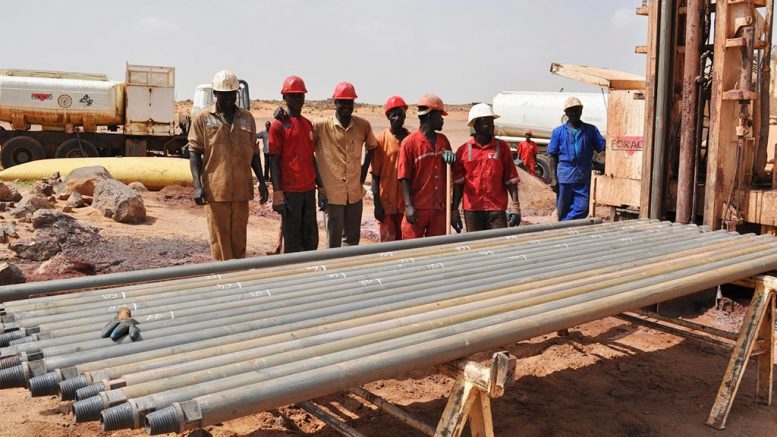Drill results from the Zone 3 extension at Global Atomic’s (TSX: GLO; US-OTC: GLATF) Dasa uranium project in Niger have “exceeded expectations,” CEO Stephen Roman says.
The drilling outlined continuous mineralization over a strike length of 300 metres long by 80 metres wide with highlights of 65 metres grading 5,493 parts per million e-triuranium oxide (eU308) starting from 434.40 metres downhole in drill hole ASDH592 and 99.80 metres grading 2,615 parts per million eU308 starting from 478.60 metres downhole in drill hole ASDH589.
The company is now 40% through its 15,000-metre drill program and will incorporate the assay results into an updated mineral reserve and mine plan later this year.
“This Zone 3 extension will be applied to update the current phase 1 mine plan and is expected to substantially reduce the amount of underground development, lower capital and operating expenses, and extend the life of the Phase 1 mine plan,” Roman says in an interview, noting that the company is building a ramp-access underground mine at the project, 105 km south of the town of Arlit.
The company plans to open its first adit in April. It is also in talks with Orano Mining about processing development ore from Dasa at Orano’s Somair operation, about 100 km north to the north.
The two companies initially signed a memorandum of understanding in 2017 under which Global Atomic could sell 500,000 tonnes of ore to Orano during the first five years of production.
The arrangement is to either have them toll mill the ore to produce yellowcake for a tolling fee or sell it to them (a direct shipping of ore or ‘DSO’ agreement) where they pay an agreed upon price to buy the ore less their processing costs, the company said.
“In the meantime, the company is in discussions with utilities regarding uranium off-take agreements and with international banks to arrange financing for the full construction of the project,” Roman says.
Global Atomic expects the fully permitted Dasa project will begin production by the end of 2024. The timing will be favourable to take advantage of the “growth in uranium demand” Roman says, as the world moves towards net zero carbon targets.
“The World Nuclear Association estimates a widening uranium supply gap over the next 20 years,” which has been fueled by the transition away from coal and oil-fired energy sources, Roman says. “Globally there are over 50 nuclear plants under construction and another 100 in the planning stage.”
“As major countries around the world move towards their net zero carbonization targets, nuclear power will be an essential and much larger part of the globe’s baseload energy solution.”
The company completed a feasibility study focused on Dasa’s Flank Zone in November. The Flank Zone represents less than 20% of the project’s resources but will make up the mine’s first twelve years of production. Using a base case price of US$35 per lb. U308, the study forecast an all-in sustaining cost of US$21.93 per pound.
At an 8% discount rate, the project would generate a post-tax net present value (NPV) of US$157 million and a post-tax internal rate of return (IRR) of 35.2%. The initial capital cost is pegged at US$208 million.
At a mining rate of 1,000 tonnes per day and an ore head grade of 5.18% U308, the study forecast average production of 3.8 million lb. U308 a year for a total of 45.3 million lb. U308 over the mine life.
At presstime, Global Atomic was trading at $3.54 per share within a 52-week trading range of $1.39 and $4.84. The company has 174.6 million common shares outstanding for a market cap of $618.2 million.




Be the first to comment on "Global Atomic releases drill results from Dasa uranium project in Niger"